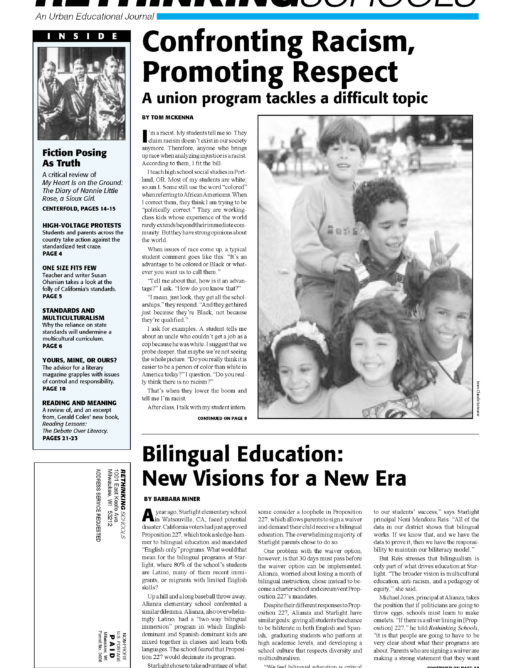Preview of Article:
Lessons from the Reading Wars
On both the academic and political fronts of the 'reading wars,' the real issues have been ignored or trivialized by the heated rhetoric of the movement
Coles begins his tightly packed book (a slim 203 pages, including footnotes and references) by reviewing the familiar accusations and claims of both “phonics” and “whole language” advocates, noting correctly that the roots of the “Great Debate” in reading methodology go back not just decades, but centuries. More importantly, he provides a historical context for the disagreements over how children are taught not only reading, but other school subjects as well. Like writer and researcher Frank Smith, Coles is aware that the debates over reading are rarely just about whether teachers should teach letter-sound correspondences or use interesting children’s literature. They are often rooted in divergent views about the purposes of schooling, the role of parents and teachers, and much more. It is these deeper purposes, he observes early in the book, that should be our real concern in talking about how we approach reading in our schools.
But before getting to his larger agenda, Coles treats the recurring symptoms of the crises, the debate over “phonics” versus “whole language” methods in teaching children to read. To do this, Coles must dive into the often arcane world of experimental psychology, but he does an admirable job of explaining some of the more technical issues of the reading debate, especially the role of “phonological awareness” in reading. The general reader with a limited background in this area will appreciate Coles’ attempt to demystify the arguments over the role of sound in reading. Readers with a more academic interest are provided copious footnotes to satisfy their curiosity for citations and more detailed arguments.
In the end, Coles concludes that, contrary to sweeping pronouncements of some policy makers and researchers, the case in favor of teaching “basic skills” in an isolated, systematic manner is not supported by the existing scientific research. This is not to say that he sides whole-heartedly with the “whole language” movement on every point, but it is clear that Coles judges the “pro-phonics” evidence from a much more critical perspective than it has received in the media so far. Equally interesting is his discussion of the role of emotions in learning, and how what students feel about themselves as learners can have an important impact on their success in school.
While the analyses of the “technical” issues in the reading debates are thorough, meticulous, and quite persuasive, it is Coles’ discussions of the broader social context that are most compelling and deserving of greater attention. He provides the reader with a penetrating look at the goals of “reading” in school, and how school does and does not shape students in thinking critically about their world.
Both phonics and whole language advocates have failed, Coles contends, to provide an adequate definition for what we want children to know, for clarifying the ends of reading. If children are to “read for meaning,” what, Coles asks, is the content of that “meaning”? Meaning, he asserts, is not a neutral category, but requires a particular view of the world. Take as an example the wider use of trade books by many teachers. While many would applaud this shift in reading materials, the stories told by these books often do not challenge the status quo of inequality, racism, and sexism present in the society at large. What do we mean when we say a child “comprehends the meaning” of these stories? A real reform in reading necessitates, as Coles points out, that we think about which meanings children arrive at, and which meanings they have access to in the curriculum</p

